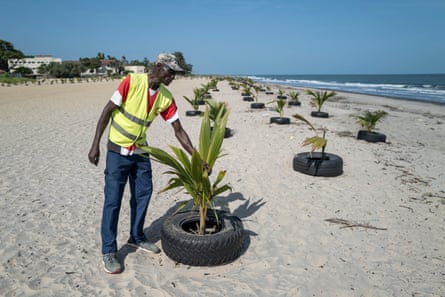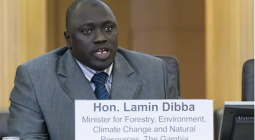Floods, sewage and crocodiles: the crisis of the Gambia’s sinking city
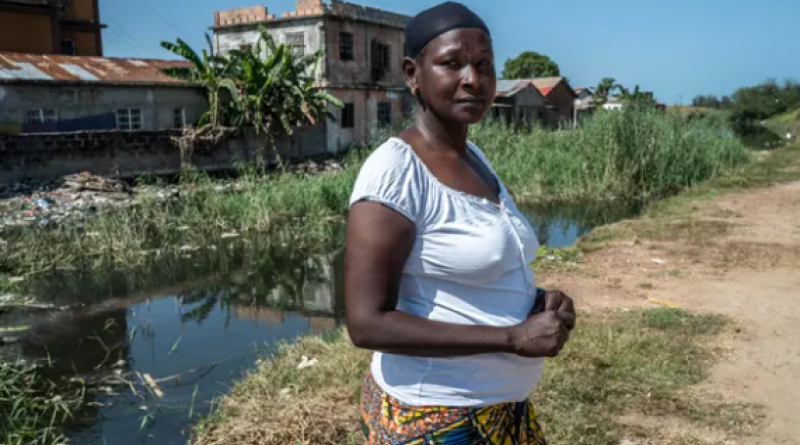
Those living in Banjul’s slums face the effects of a climate crisis they did little to cause – and will need more help than the Cop26 deal promises
Yedel Bah would move home if she could, but she can’t. With no income of her own, four children to feed and a husband who just about manages, her family lives from day to day, and from flood to flood, on the banks of a litter-strewn, stagnant canal.
Every rainy season, the neighbourhood of Tobacco Road in the Gambian capital, Banjul, braces for downpours of such intensity that the canal overflows, spilling its murky, pungent depths into the slum-like homes that run alongside it.
After one particularly bad flood this summer, the waters remained in Bah’s rooms for 11 days. “Everything was spoiled,” she says. “Food, everything, even our mattress.”
This would be bad enough if the canal were even moderately clean, but it isn’t: until recently, a local MP says, a pipe was dumping raw sewage into it. Crocodiles have been seen lurking nearby, and a couple of years ago one made its way out of the canal into a mosque just a few doors down from Bah’s compound.
Bah, 45, worries about her children growing up here and what will happen during the next flood – for it is a question of when, not if, this will happen. But she can do little to improve her situation. “I have no choice,” she says.
Life in Tobacco Road, a poor neighbourhood in the low-lying coastal capital, has never been easy, but it is becoming more and more difficult. It is places like this – where physical vulnerability is exacerbated by abject poverty and failing infrastructure – that needed more from Cop26 than they appear to have got.
“We need help,” Bah says simply, when asked about her message to political leaders. But it is not clear where that help will come from.
The Gambia is a small strip of low-lying land in west Africa along both banks of the river from which it takes its name. As one of the world’s poorest and least-developed countries, it is suffering the effects of a climate crisis it did very little to cause. On an island jutting out into the Atlantic, less than a metre above sea level, Banjul is particularly exposed.
But residents say human-made failures have made its future even more perilous.
Ousman Sillah, the national assembly member for Banjul North, the constituency that includes Tobacco Road, fears that unless concerted action is taken soon, disaster looms.
“Well, we are going to lose Banjul at the end of the day. It’s going to be uninhabitable unless the country is prosperous [enough that] we can have a city on stilts.” He laughs wryly as if to acknowledge how far-fetched that sounds in a country where nearly half the population live in poverty. “We are not ready for that. If you look at Banjul now, people are so poor they cannot afford that.”
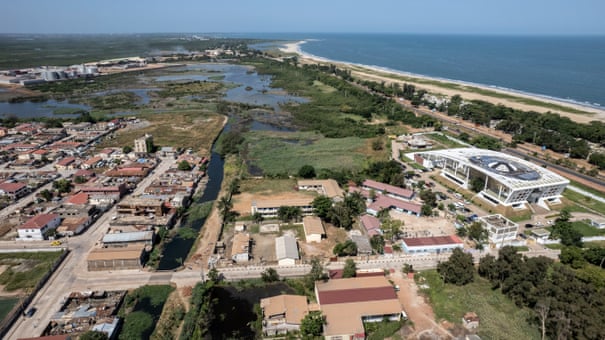
In a worst-case scenario, envisaged by experts in a 2020 survey, global heating of 4.5C above pre-industrial levels could mean a sea level rise of between 0.6 and 1.3 metres by 2100. That would be enough to inundate most or all of Banjul.
Many experts fear the Intergovernmental Panel on Climate Change’s forecast of a 1.1-metre rise is optimistic. In either scenario, one thing is clear: the city is in serious jeopardy. As signposts by the road state: “There is no planet B. Protect Banjul.”
One man believes it is time for the government to think about plan B. Nfamara Dampha, a Gambian research consultant at the World Bank, wants plans drawn up to move the country’s administrative capital away from the coast.
“Make no mistake: Banjulians love Banjul,” he says from Minnesota. “And if Banjul can be protected … people will still love to live there.”
But he adds: “The option of having an administrative capital elsewhere is imperative, in my opinion.”
Although about 380,000 people live in the greater Banjul area, the population of the island is just 35,000. But Dampha believes that, with the National Assembly, central bank, biggest hospital, seaport and many schools, the city is too big – in administrative terms – to be allowed to fail. “It’s a capital asset of the country,” he says. “If it falls or is severely impacted, the [Gambian] economy [will be] on the verge of collapse.”
The drastic idea has some support. But for Sillah, a fourth-generation Banjulian, it is unrealistic: too costly and “not a priority”. What the city needs, he says, is improvements to its basic infrastructure that would make it more resilient in the face of erratic rainfall, rising sea levels and coastal erosion.
When he was a boy, he says, “on a daily basis, we would see cleaners going down into the gutters. They were so clean that we as kids used to play in [them] … Sometimes you could even see live fish in the gutters, the water was so clean.”
Now, gutters and drains in Banjul are clogged with waste, so when the rains come, there is nowhere for water to flow safely.
Sillah says the solutions range from the prosaic – better waste collection and gutter cleaning – to the ambitious, such as building stronger, more elevated housing, rather than the slum-like homes of Bah and her neighbours. The drainage canal should be given concrete sides to enable it to withstand greater rainfall, he says. Construction on the wetlands just beyond Tobacco Road should stop immediately.
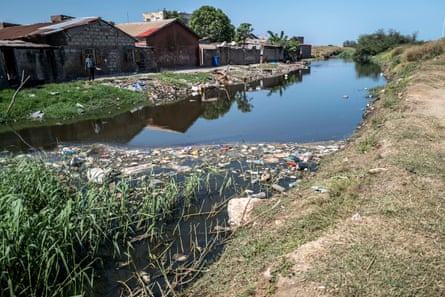
At the end of September, when heavy rains brought more flooding to Tobacco Road, the mayor of Banjul, Rohey Malick Lowe, visited the area and announced she and other relevant authorities were tackling the problem. “The safety of the people of Banjul will always be our concern and we believe this will reduce the level of the stagnant water in the city,” a statement said. “In the service of the community, we will continue to remain!”
A committed band of young people believe part of the solution lies in nature. To preserve Banjul beach, activists with Clean Earth Gambia started planting thousands of coconut trees in the sand, hoping the palms will defend the coastline against the encroaching sea.
With funding from a €3m (£2.6m) EU partnership with the Belgian city of Ostend, they have planted 7,000, and saplings stretch for more than a mile along the beach.
Maimuna Treira, 23, a physics student at the University of the Gambia, says: “In the Gambia, the people advocating for climate change are not many. So we decided it was high time that youths take ownership of this. We know the rising sea level is a threat to Banjul, so that was why we decided to make Banjul our main focus.
“We have to act now,” she says. “We don’t have to wait till later because it’s our generation, it’s our time, so let’s do what’s needed.”
For months, Treira and her fellow activists came to the beach every weekend to plant trees. Their work was not without opposition: young boys playing football were annoyed their spot was being used.
But the project also has plenty of fans. On a sweltering November morning, Abdul Karim Mbatch steps from sapling to sapling along Banjul beach, giving each a good watering. The city council employee wants the trees to go even further along the coast, hoping they will help save his city. “This will keep the sea away,” he says.
Only time will tell if he is right.
15 November 2021
